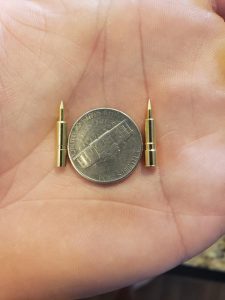The greatest good for dealing with COVID-19 might not come from the hands of humans at all.
As biotechs, massive pharmaceutical companies and governmental labs around the world work to dissect the coronavirus and develop vaccines and treatments, another group of workers are on the case: computers.
Groups like Oxford-based Exscientia and Cambridge-based Healx are using artificial intelligence to dig through thousands of drugs to find a potential treatment for this worldwide pandemic.
They are also using AI to break down and understand the structure of the virus, how it works and what weaknesses it might have.
This is work that could take humans years to do.
But with AI structures being built today, it can be days or even hours to scour medical reports and data from thousands of studies and hospitals.
That’s just on the development side.
AI is being put to the test in other areas strained by the virus.
Dana Edelson, physician at the University of Chicago Medical Center, is reworking an AI system called eCART. Already, eCart is used in more than 20 hospitals in the U.S. to analyze and interpret medical records, vital signs, lab results and demographics to predict the likelihood of cardiac arrest. Now, it is being retooled to make predictions on COVID-19-positive patients.
Edelson isn’t alone. Other researchers such as Bo Xu at the Tianjin Medical University Cancer Institute and Hospital is using artificial intelligence to study CT scans from hundreds of individuals and detect COVID-19. Xu’s team reports its model is already 89.5% accurate in just a few weeks.
Using state of the art technology to develop emergency treatments and diagnoses is nothing new, of course. But this time we could see something unique emerge.
It’s not just one game-changing technology at play.
Next-era technologies are being developed to fit together, enhancing one another.
Take AI and 5G technology, for instance. AI works better with more and more data to analyze and study.
5G can transmit data faster than anything previously, to the scale of 20 times faster than 4G. You can see where this is going.
Professor Kris Seeburn, a leading cybersecurity and digital forensics expert, wrote last year, "With 5G helping in the background online simulations for analysis, reasoning, data fitting, clustering and optimizations, AI will become more reliable and accessible at the speed of light."

Grab a piece of paper and pen to write this down…
Because you’re about to see the name and ticker symbol of the ONLY 5G STOCK every investor should own.
You can get the name and ticker of this company right here, no strings attached. But you better act fast…
Because the Federal Communications Commission, the government agency in charge of 5G, just scheduled a major announcement that would send shares soaring once announced.
Don't miss out. Click Here to Get #1 5G play for 2020 before the next market close.
He and others have pointed out that 5G can make data on clouds as quickly accessible for AI systems to use as if it were local. Hospitals have already used 5G to transmit patient health and other data to AI systems. Further interconnectivity as the world fights this pandemic will again link the two technologies.
It’s obviously not just the medical world that’s using the combined power of AI and 5G technology.
Retail stores such as Neiman Marcus are using it to sense how many times customers pick up items off shelves, transmit that data and analyze it alongside product sales figures to see what’s working and what’s not.
Beer maker Carlsberg is working with Aarhus University and Microsoft Corp. (NYSE:MSFT) to analyze yeast variants before the fermentation process starts to develop "the ultimate flavor." This work uses sensors, 5G networks and AI to transmit and process this data.
There’s also great work going on between these technologies in factories. The cost and upkeep of heavy machinery can be devastating to factories. If something goes wrong, and machines break down, it can cost millions in both downtime and repairs or replacement.
42Q, a company worth watching in this space, is working on sensors and systems to monitor, analyze, predict and report any problems before they happen.
42Q is owned by Sanmina Corp. (Nasdaq:SANM). While these two technologies are too big and important for just one company to grow into the sole leader.
Sanmina’s technology in manufacturing equipment and machines could be a real moneymaker as we get back on our feet in the coming months.